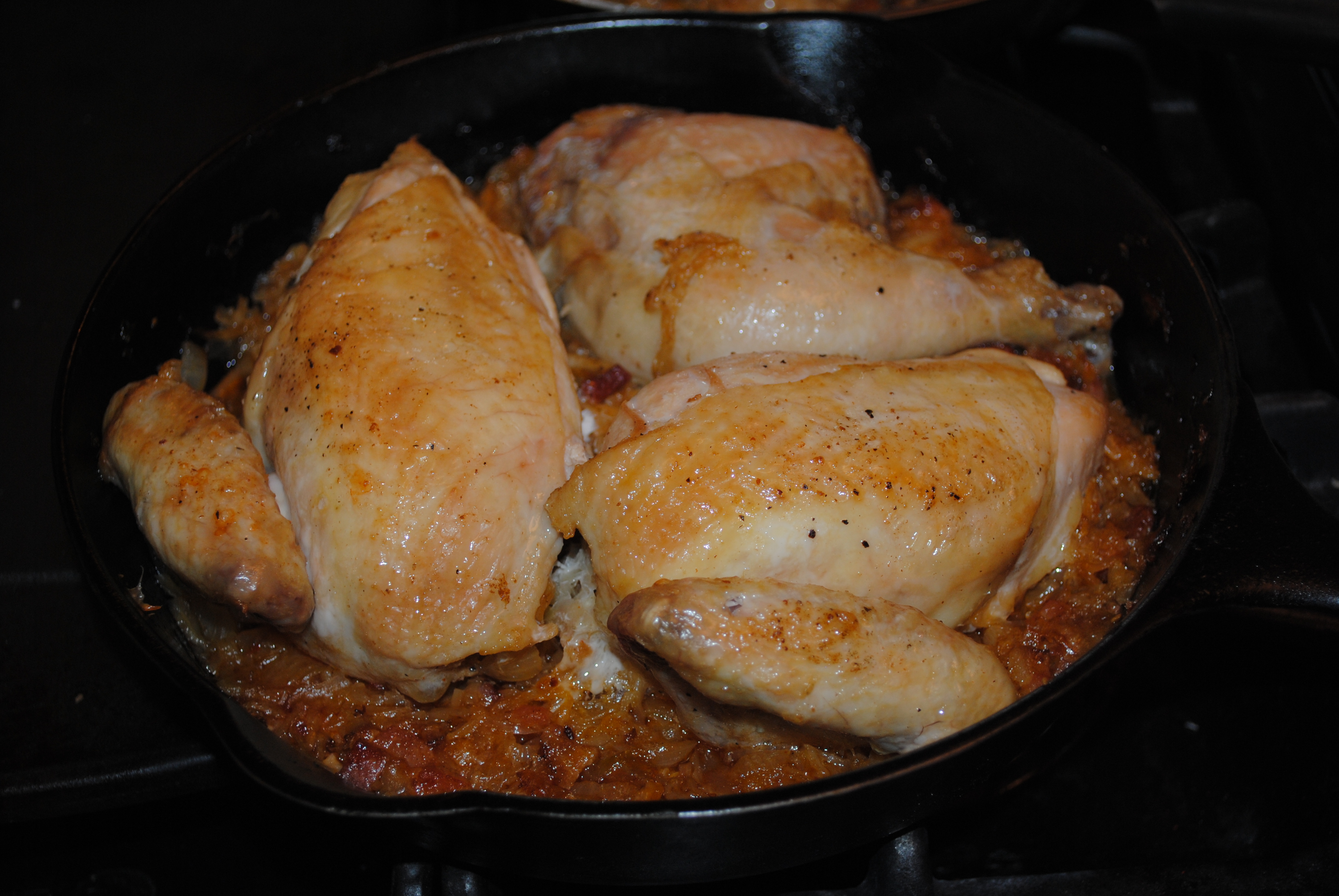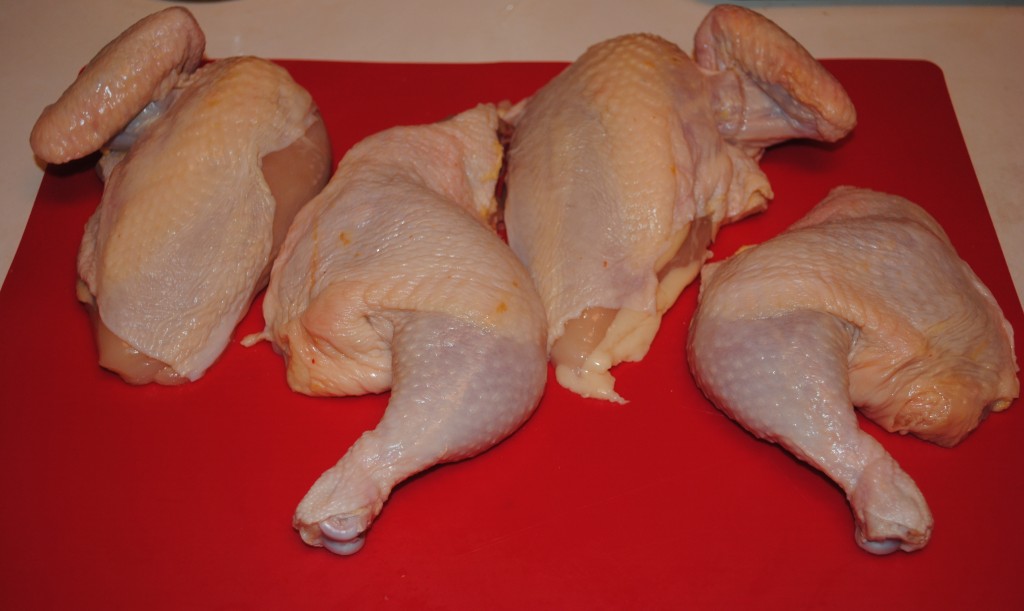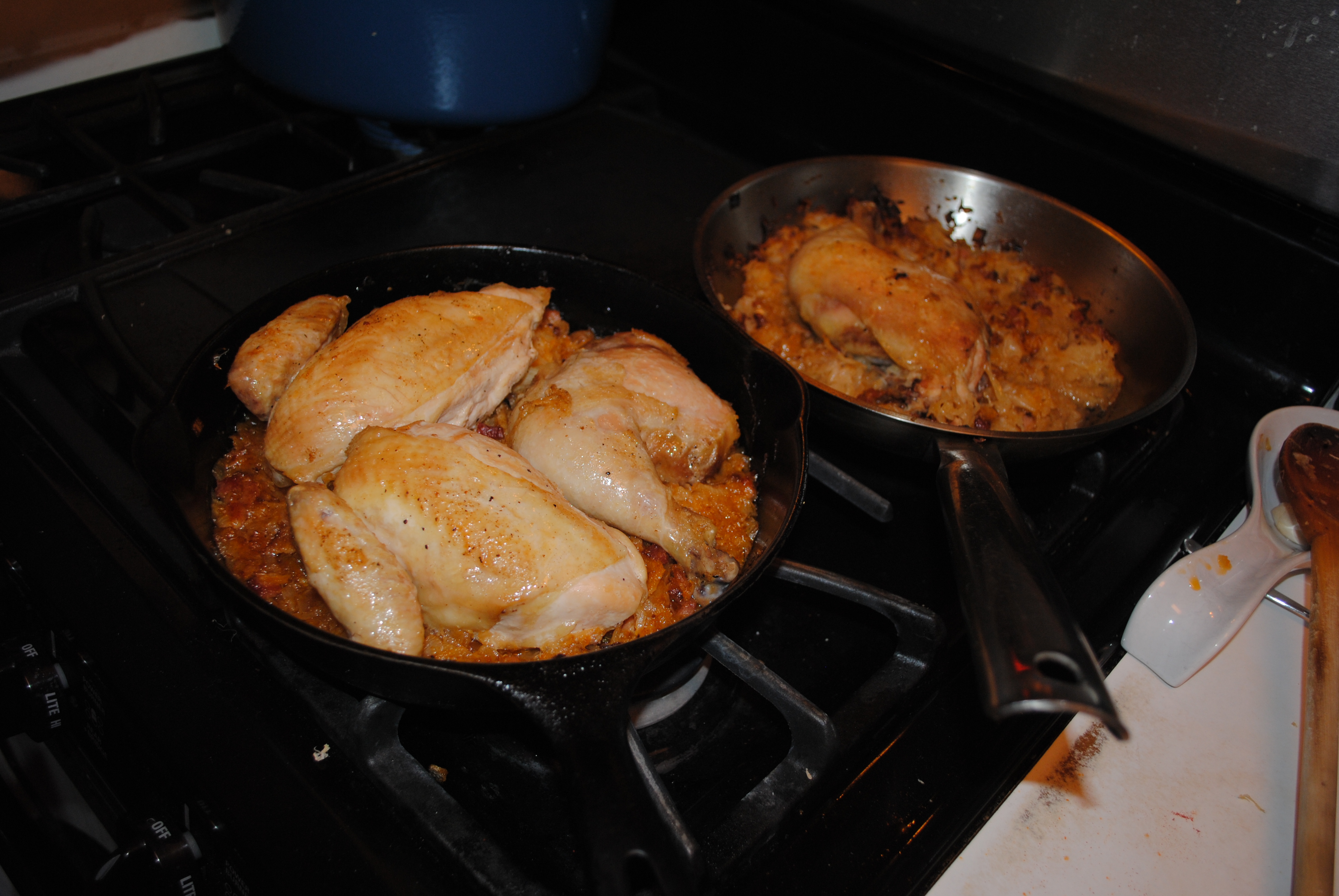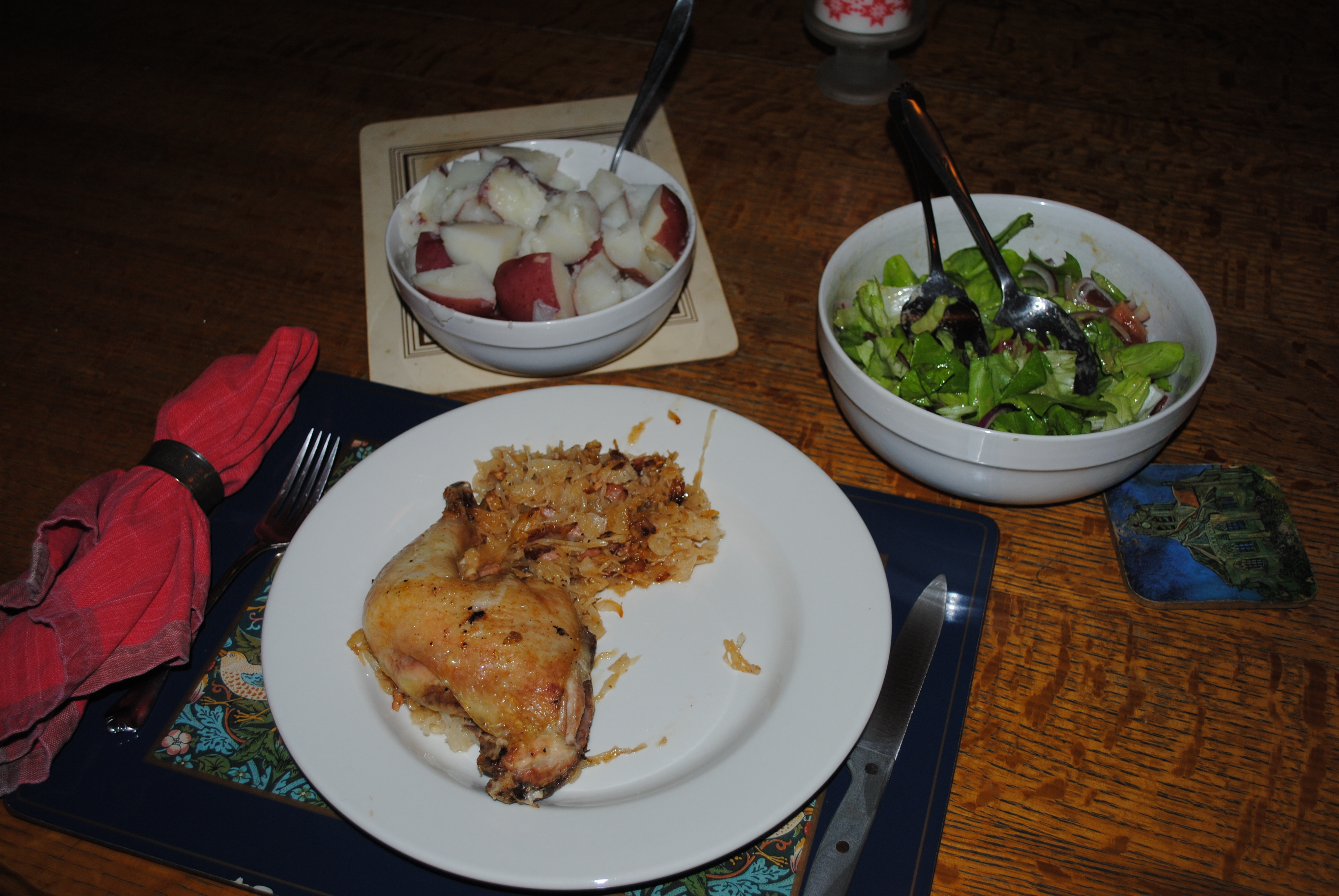It’s the start of a new semester on campus and (as every magazine’s January issue makes clear) time to realize the promises you made yourself on New Year’s Eve. I’m trying to be less of a sourpuss in general, and smile more like Victoria Grayson in particular (the key is drawing it out—taking three times as long to smile as seems absolutely necessary). I’m also dedicated to putting my Christmas presents to good use, particularly my lovely new cast-iron skillet and the Edible Brooklyn Cookbook. This week’s recipe, Cast-Iron Chicken with Bacon and Sauerkraut, manages to accomplish both goals with aplomb.
Aside from giving everyone an opportunity to admire my new kitchenware, the main point of this post is to talk about how to read a recipe. Growing up with a cook for a mother, I internalized some pieces of kitchen wisdom at a young age. I can’t remember a time when I didn’t know how to cut an onion or peel a garlic clove. Assuming knowledge on the part of others, however, can be a dumb choice. There are very few ruder things a hostess can do than accept the offer of help from some friendly guest, only to whirl around in horror upon discovering just how said guest goes about making a salad (as my sister can tell you, the “Lettuce: To Cut or Tear” debate will long live in infamy). So, in the spirit of friendly host/guest relations everywhere, here is how I go about reading a recipe. Reading a recipe sounds so simple, but it actually is an acquired skill. My way of recipe-reading is certainly not the only valid one out there. Like the Pirate’s Code, it’s more of a set of guidelines.
How To Read A Recipe (or, to quote my forth grade teacher, “If there’s a dot on that page, read it”)
1. Read the list of ingredients. Think about if you have those ingredients. Then, go and check your pantry anyway. This is how you keep yourself from winding up with four (yes, you heard that right, four) bottles of Worcestershire Sauce. Write down anything you don’t have.
2. Read the rest of the recipe, carefully. Pay special attention to parts that say things like “let chill overnight” or “let simmer for three hours.” Circle these parts. You will be happy you did, and far less likely to miss mock trial meetings on account of wildly underestimating cooking time. Also pay attention to any special equipment you might need. If the recipe calls for a 9 by 8 cake pan and you don’t have one, you’re not going to get very far.
3. Go buy whatever ingredients you need. Make a shopping list, including quantities, beforehand.
4. On the great day of cooking, after you have set aside enough time to complete the recipe in full, including letting that dough chill in the fridge for two hours, read the ingredients again. Assemble them all on your countertop.
5. Complete your mise. This means: render all of your ingredients into the state the recipe demands that they be in. Roughly chop that onion, mince that garlic, julienne those carrots. This practice has apparently fallen out of favor in certain circles. Ignore those circles. Those cooking show hosts have everything pre-chopped and measured for a reason.
6. Read the recipe through once more from start to finish, to get your head in the game.
7. Commence cooking, starting with step one and continuing on through till the end.
And now, Cast Iron Chicken with Bacon and Sauerkraut, from the Edible Brooklyn Cookbook (Totally worth a buy, even if just for the inside dust jacket map of Brooklyn!)
Ingredients—Serves 4 (READ THESE FIRST)
1/2 a pound good-quality bacon (I rarely buy cheap bacon. Why skimp on one of life’s great affordable pleasures?)
1 chicken, 3-4 pounds
2 onions, chopped
2 sprigs thyme
1 bay leaf
1 tsp red pepper flakes
1 tsp smoked paprika
1 pound sauerkraut, rinsed and drained
1/2 cu. chicken stock
*Note: When I made this recipe, I had to use two skillets to fit in the chicken and sauerkraut. My nine-inch skillet comfortably fit in three pieces of chicken, but would not tolerate a fourth.
1. Preaheat your oven to 350 degrees.
2. Quarter your chicken. To do this, you will need to cut the chicken open using good kitchen shears. Open the chicken so that its ribs are exposed. Here’s a pretty good video demonstration.
3. Heat a cast-iron skillet over medium high heat, and cook the bacon until its fat is rendered. Transfer the bacon to a paper-towel lined plate using a slotted spoon.
4. Season the chicken quarters on all sides with salt and pepper. Brown in the bacon fat on all sides. Remove the chicken to another plate.
5. Brown the onions in the bacon fat, adding some extra oil if needed. Add the thyme, bay leaf, red pepper flakes and paprika and stir together. After about two minutes, add the bacon back in, stirring to mix.
6. Add the sauerkraut to the skillet, stirring to combine with the other ingredients. Arrange the browned and quartered chicken on top of the sauerkraut and pour the stock over.
7. Transfer the chicken to the oven and roast. The original recipe gives a cooking time of forty minutes, although it took more like fifty when I made it. The chicken is done when you stick a knife in it and the juice that runs out is clear.
8. Serve one chicken quarter per person, with plenty of sauerkraut.
I served this with boiled red skin potatoes , liberally buttered, and a salad.
Carbs per person (with two small potatoes per person): 54
Score of the Giants/Packers Game: 37-20 (story here and here).





